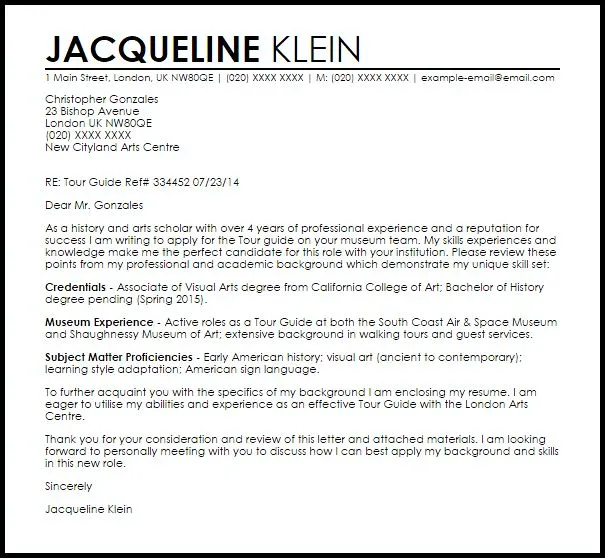Understanding the Museum Educator Cover Letter
A museum educator cover letter is more than just a formality; it is your introduction to a potential employer and your opportunity to showcase why you are the ideal candidate for the position. Unlike a resume, which provides a factual overview of your qualifications, a cover letter allows you to tell your story, highlighting your passion, skills, and experiences in a way that resonates with the hiring manager. This guide will walk you through the essential components of a successful museum educator cover letter, helping you to craft a compelling document that sets you apart from the competition and increases your chances of landing your dream job. By following these guidelines, you can create a cover letter that effectively communicates your qualifications and enthusiasm, ultimately making a strong impression on the hiring committee. A well-written cover letter demonstrates your understanding of the role, the museum’s mission, and how you can contribute to their educational programs. It is a crucial step in the application process, offering a platform to articulate your unique value proposition and convince the employer that you are the best fit for the position. A thoughtfully crafted cover letter is your key to unlocking new career opportunities.
Why a Cover Letter is Crucial
A cover letter serves as a crucial bridge between your resume and the hiring manager’s perception of you. It allows you to elaborate on your experiences, explain gaps in your employment history, and express your personality, skills, and passion for the role in a narrative format. The cover letter provides a space to highlight your most relevant skills and experiences, ensuring that the hiring manager quickly understands your qualifications. Without a cover letter, you risk your application getting lost in the pile. It’s your chance to shine, to show you’re not just qualified on paper, but also excited about the opportunity. In a competitive job market, a well-crafted cover letter gives you a significant edge. It’s your opportunity to convince the employer that you’re not only qualified but also a great fit for the team and the museum’s mission. Think of it as your personal pitch, designed to grab the hiring manager’s attention and create a positive first impression.
The Purpose of a Cover Letter for Museum Educators
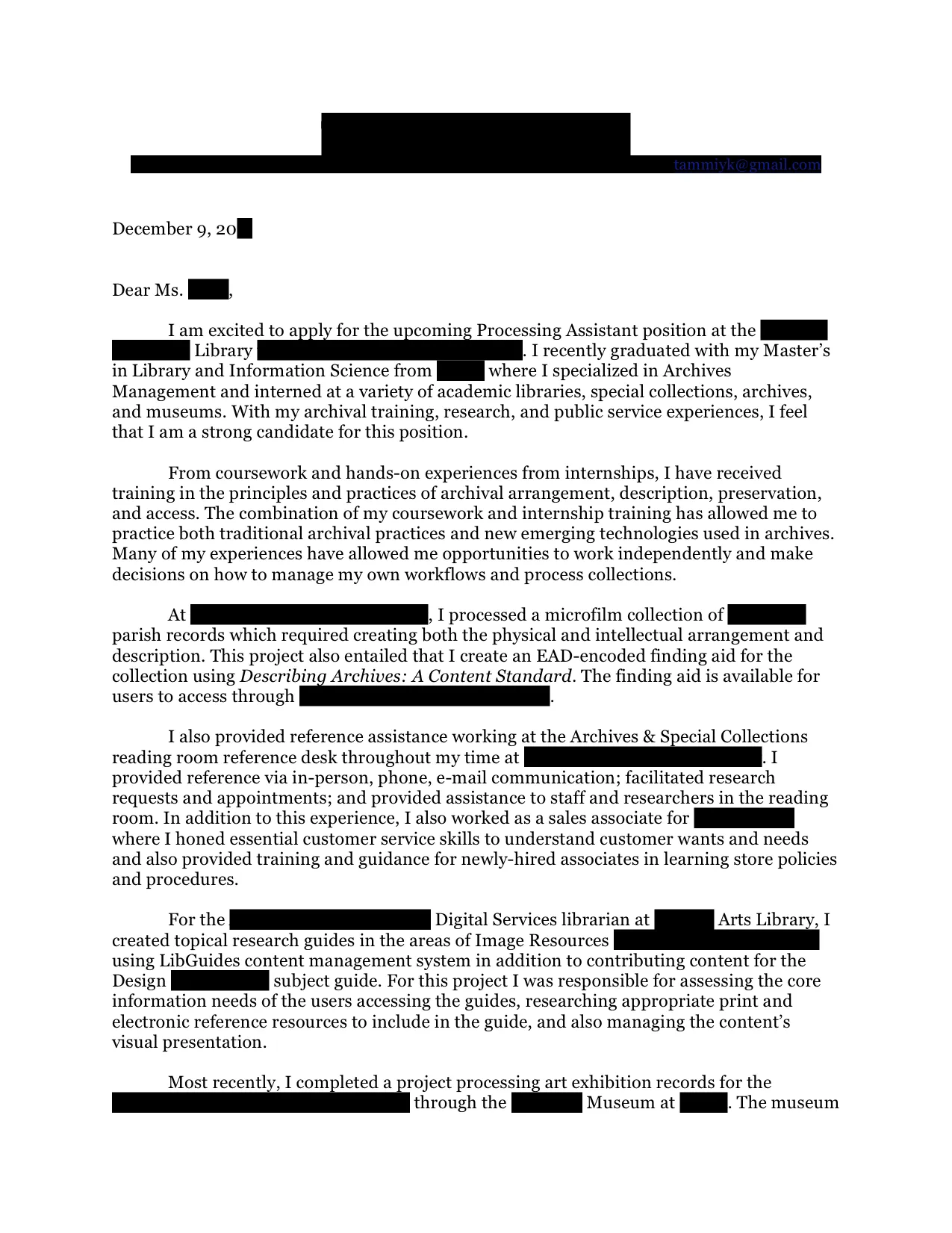
The primary purpose of a museum educator cover letter is to introduce yourself and demonstrate your suitability for the position. It is where you make your case, showcasing your ability to engage audiences, develop educational programs, and contribute to the museum’s mission. The cover letter needs to address why you are interested in the specific museum and how your skills align with their educational goals. It’s your opportunity to demonstrate your research into the institution, mentioning specific programs or exhibitions that excite you. Moreover, it’s where you can articulate your educational philosophy and how it aligns with the museum’s vision, showing how you can add value to their educational initiatives. Essentially, a well-written cover letter allows you to persuade the hiring manager that you are not just qualified on paper, but also a great fit for their team and the unique environment of the museum. It is where you paint a vivid picture of your passion for museum education.
Key Components of a Museum Educator Cover Letter
A compelling museum educator cover letter includes several key components. It needs to open with your contact information, followed by a professional salutation. The opening paragraph should capture attention and state the position you’re applying for, while the body paragraphs delve into your relevant skills, experiences, and educational background. Finally, a strong closing paragraph expresses your enthusiasm, availability for an interview, and a call to action. The letter should be well-organized, easy to read, and tailored to the specific museum and position. Your letter should also reflect your understanding of museum education principles, the ability to work with diverse audiences, and any specialized skills that make you stand out, such as experience in program development or specific subject matter expertise. Each component plays a vital role in demonstrating your capabilities and increasing your chances of being selected for an interview. The key is to be clear, concise, and compelling, showcasing your unique value proposition.
Contact Information and Date
At the top of your cover letter, provide your full name, address, phone number, and professional email address. This information ensures that the hiring manager knows how to contact you. Following your contact details, include the date you are submitting the application. This date confirms when you sent the document and is a professional courtesy. Ensure the format of your contact information is clean, and the email address is appropriate. Avoid using informal or outdated email addresses. Using a professional email address demonstrates your attention to detail and seriousness about the role. The accuracy and accessibility of your contact information are vital, as it guarantees the employer can reach you promptly if they wish to schedule an interview.
The Salutation How to Greet the Hiring Manager
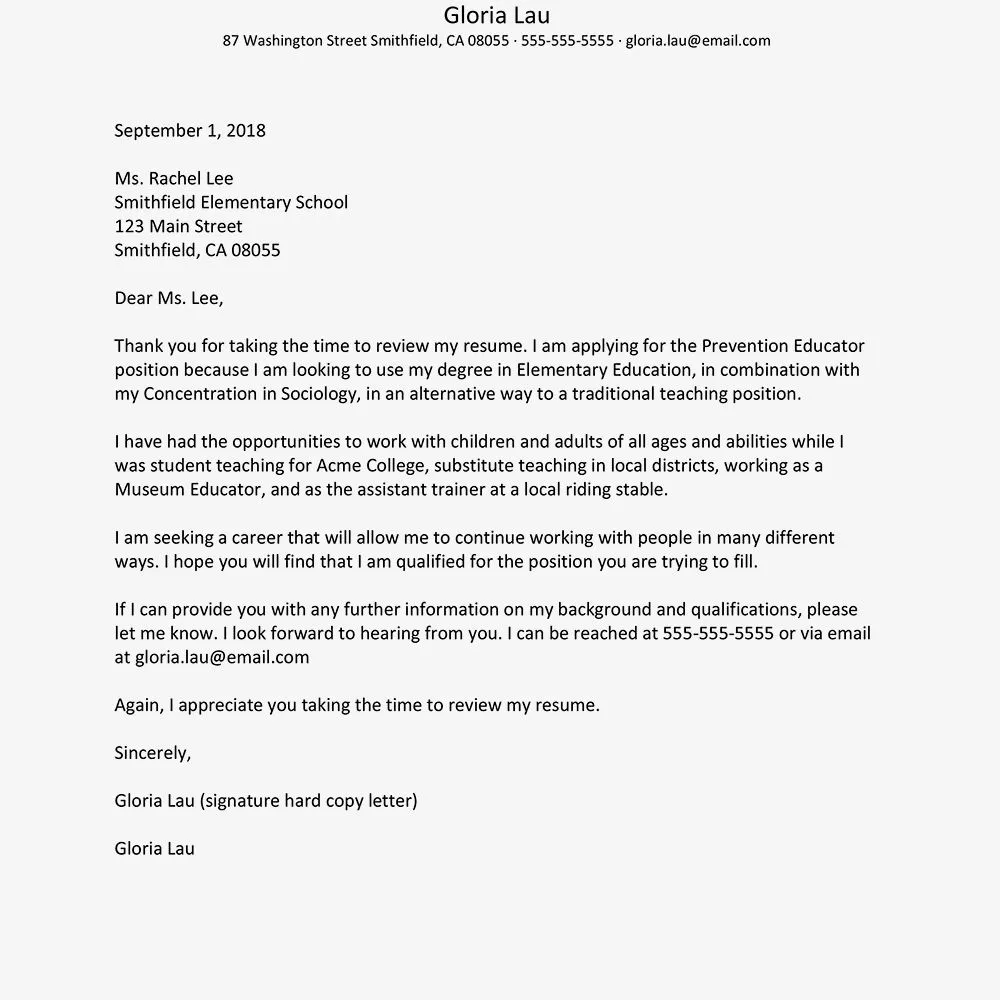
The salutation sets the tone for your cover letter, and choosing the right one is important. Whenever possible, address the hiring manager by name. Researching the hiring manager’s name on the museum’s website, LinkedIn, or through a quick phone call shows initiative and personalizes your letter. Use “Dear Mr./Ms./Mx. [Last Name]” for a formal tone. If you can’t find a specific name, opt for a general but professional greeting such as “Dear Hiring Committee” or “Dear [Museum Name] Hiring Manager”. Avoid generic greetings such as “To Whom It May Concern”, which can make your application feel impersonal. Ensure you spell the hiring manager’s name correctly, as errors suggest a lack of attention to detail. The salutation is the first point of contact, so make it count by being professional and personalized.
Crafting a Compelling Opening Paragraph
Your opening paragraph is the hook of your cover letter, capturing the reader’s attention and setting the stage for the rest of the document. Immediately state the position you are applying for and where you found the advertisement. Show your enthusiasm for the role and the museum. Briefly mention your relevant qualifications or skills. The opening paragraph should be concise, compelling, and provide a clear indication of why you are interested in the position. Consider starting with a strong statement about why you want to work in museum education or what specifically excites you about the museum. This could be an anecdote, a brief mention of your career goals, or a reference to a recent museum program that resonated with you. Ensure the first paragraph quickly communicates your purpose for writing and sparks the reader’s interest in learning more about your qualifications.
Highlighting Relevant Skills and Experience
In the body of your cover letter, highlight the skills and experiences most relevant to the museum educator role. Review the job description carefully and identify the key requirements. Provide specific examples of how you have demonstrated these skills in previous roles or experiences. Use action verbs to describe your accomplishments. Focus on the outcomes of your actions, quantifying your achievements whenever possible. For example, instead of saying “I developed educational programs,” you could say, “Developed and implemented three new educational programs that increased visitor engagement by 20%.” Tailor your examples to the specific needs of the museum. Include your experience in areas such as curriculum development, program facilitation, audience engagement, and educational outreach. Show how your skills align with the museum’s mission and the requirements of the position.
Showcasing Educational Background and Training
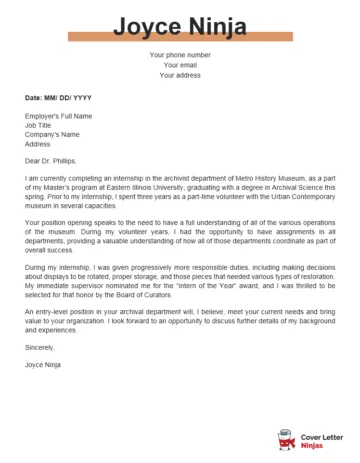
Detail your educational background and any relevant training or certifications. Mention your degree(s), the institutions you attended, and any honors or specializations. If you have a degree in education, museum studies, or a related field, highlight it. If your degree is in a different subject, explain how your skills and knowledge are still relevant to the role. Mention any specific coursework, workshops, or professional development opportunities that have prepared you for museum education. Be sure to include relevant certifications, such as those related to teaching, museum education, or specific subject areas. Focus on the education and training that directly support your ability to educate, engage, and inspire visitors. This is your chance to show that you have the knowledge and qualifications to be a successful museum educator.
Demonstrating Passion for Museum Education
Demonstrate your genuine passion for museum education. Explain why you are drawn to this field, what excites you about working with museum visitors, and what motivates you to make learning fun and engaging. Share your personal experiences with museums and how they have influenced your interest in education. Discuss your philosophy of museum education and your approach to connecting with audiences. Talk about your experiences helping others learn. Mention how you stay current with the latest educational trends and techniques. Your passion should be evident in every paragraph. Show the employer that you are excited about the role, the museum’s mission, and the opportunity to make a difference. Illustrate your enthusiasm for the specific museum and its educational programs.
Quantifying Achievements and Contributions
Whenever possible, quantify your achievements and contributions to demonstrate your impact. Use numbers and statistics to show how you have improved educational programs, increased visitor engagement, or expanded outreach. For instance, instead of saying “I improved program attendance,” you could state, “Increased program attendance by 30% through targeted marketing efforts.” If you have experience developing or managing budgets, mention the size and scope of your projects. Quantifiable results help employers understand the value you bring to the table. This is especially important when describing your experience in program development, community outreach, and audience engagement. Providing specific metrics offers solid proof of your successes, making a lasting impression on the hiring manager.
Tailoring Your Letter to the Specific Museum
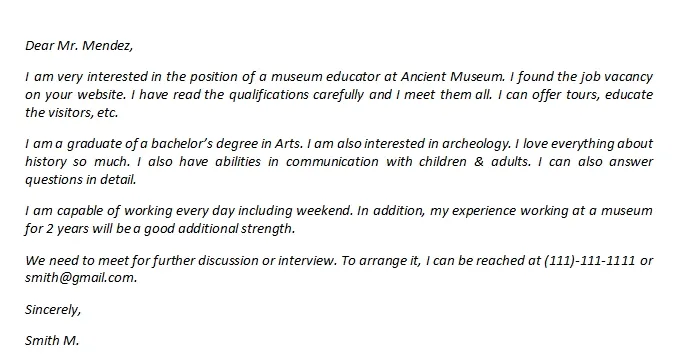
Tailoring your cover letter to the specific museum is a critical step in the application process. It shows that you have taken the time to research the institution and understand its mission, values, and educational programs. Mention specific exhibits, programs, or initiatives that resonate with you, and explain why. Demonstrate your awareness of the museum’s audience and its goals. The customization indicates genuine interest and enthusiasm. Tailoring your letter demonstrates that you’re not just sending a generic application but are genuinely interested in the role and the specific museum. This may involve highlighting your experiences with the museum or aligning your skills with their specific needs. Customization demonstrates that you care and are eager to contribute to their educational vision.
Researching the Museum’s Mission and Values
Before writing your cover letter, research the museum’s mission and values. Visit their website, review their social media, and, if possible, visit the museum. Understand their educational goals, target audience, and current initiatives. Use this information to tailor your cover letter to the museum’s specific needs and demonstrate that you are a good fit for their culture. Incorporate the museum’s language and keywords into your letter. Show that you understand their priorities and are aligned with their goals. This research helps you speak directly to the needs of the hiring manager and showcases your commitment to their organization. Make sure to emphasize how your skills and experiences can help the museum fulfill its mission and achieve its educational objectives. Demonstrating a solid understanding of the museum’s mission will significantly enhance your chances of getting an interview.
Customizing Your Letter’s Tone and Content
Adjust the tone and content of your cover letter to match the museum’s personality and the role’s requirements. Use a professional yet engaging tone that reflects the museum’s brand. If the museum has a more casual or creative environment, you can adopt a slightly more informal tone, but always remain professional. Match your content to the specific requirements outlined in the job description. Focus on the skills, experiences, and qualifications that are most relevant to the position. Review the job description carefully to identify the museum’s key needs and tailor your letter accordingly. Highlight how your skills and experiences align with the role’s responsibilities. Customization ensures that your cover letter is well-received and that the hiring manager understands your suitability for the position.
Writing a Strong Closing Paragraph
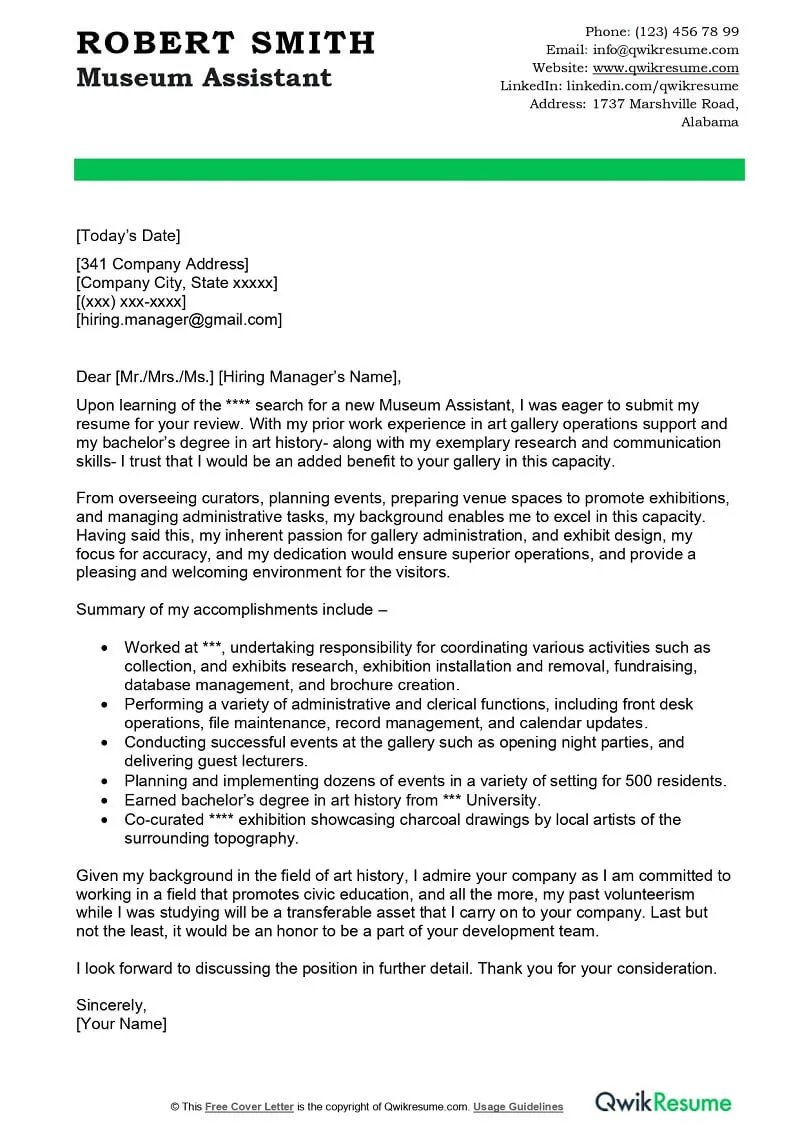
Your closing paragraph should summarize your interest in the position, reiterate your qualifications, and express your enthusiasm for the opportunity. Thank the hiring manager for their time and consideration. Express your availability for an interview. Provide a clear call to action. Restate your interest in the position and the museum. Mention you are eager to discuss how your skills and experiences align with their needs. Include a line that confirms your availability for an interview and provide your contact information again. Make sure your closing paragraph leaves a lasting positive impression. The closing should reinforce your key strengths and leave the reader with a clear understanding of your interest and qualifications.
Expressing Enthusiasm and Availability
Convey your enthusiasm for the position and the museum throughout your cover letter, but especially in the closing. Make it clear that you are eager to learn more about the role and the institution. Reiterate your excitement about the museum’s mission and educational programs. Express your availability for an interview. Mention your willingness to discuss your qualifications and how you can contribute to the museum’s success. Make sure you are reachable and easy to contact. Provide your phone number and email address. Make it easy for the hiring manager to schedule an interview with you.
Proofreading and Formatting Your Cover Letter
Proofreading and formatting are essential steps in creating a professional cover letter. Carefully review your letter for any grammatical errors, spelling mistakes, and typos. Use a spell checker, but also read the letter aloud to catch errors a spell checker might miss. Ensure that your formatting is consistent and easy to read. Use a standard font, such as Times New Roman or Arial, with a font size between 11 and 12 points. Use clear headings and spacing to break up the text and make it more accessible. Proofread multiple times. Consider having someone else review your letter to provide a fresh perspective. A well-formatted and error-free cover letter demonstrates attention to detail and professionalism.
Common Mistakes to Avoid
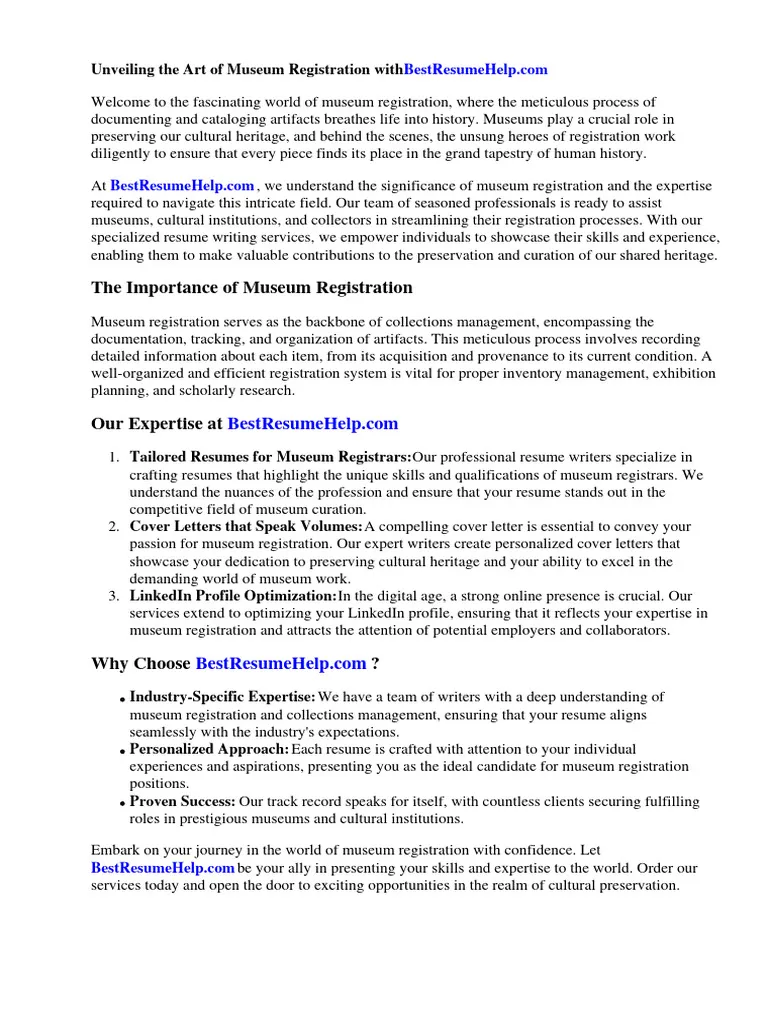
Avoid common mistakes that can undermine your application. Do not use generic cover letters or fail to tailor your letter to the specific museum and position. Avoid typos, grammatical errors, and spelling mistakes. These errors can reflect poorly on your attention to detail. Do not write a cover letter that is too long or too short. Keep it concise and focus on the most relevant information. Avoid exaggerating your skills or experience. Do not use jargon that the hiring manager might not understand. Be positive and enthusiastic throughout your cover letter. It is also important to avoid negativity. Avoid any negative comments about former employers or experiences. By avoiding these common mistakes, you can improve your chances of making a positive impression.
Formatting Best Practices
Follow these formatting best practices to ensure your cover letter is professional and easy to read. Use a standard font, such as Times New Roman or Arial, with a font size between 11 and 12 points. Use single spacing within paragraphs and double spacing between paragraphs. Align your text to the left, avoiding justification. Use clear headings to break up your text and make it more scannable. Keep your letter to one page, if possible. Use consistent margins throughout the document. By following these formatting guidelines, you present your information in a professional and accessible way. This also ensures that your cover letter is easy to read, making a positive impression on the hiring manager.
Ensuring Clarity and Conciseness
Ensure your cover letter is clear and concise. Use simple and straightforward language. Avoid complex sentences or jargon. Focus on the most important information. Use strong action verbs to start your sentences and to describe your accomplishments. Proofread your letter carefully to eliminate any unnecessary words or phrases. Each sentence should have a purpose and contribute to the overall message. Your aim should be to create a clear and compelling narrative that shows your value. The goal is to quickly communicate your qualifications, enthusiasm, and how you can help the museum succeed.
Tips for Standing Out From the Competition
To stand out from the competition, showcase your unique qualities and experiences. Tailor your cover letter to the specific museum and position. Highlight any special skills or experiences that make you a strong candidate. Show your passion for museum education. Quantify your achievements whenever possible. Demonstrate your understanding of the museum’s mission and values. Mention any relevant volunteer work, personal projects, or other activities that show your commitment to education and museums. To stand out, it is crucial to be authentic and genuine. Make sure your personality shines through your writing. Tailor your cover letter to the specific museum and position. Highlight any special skills or experiences that make you a strong candidate. Show your passion for museum education.
Using Action Verbs and Keywords
Use action verbs to describe your accomplishments and responsibilities. This helps your cover letter stand out, and shows your proactive and engaged attitude. Incorporate keywords from the job description to show you are a good fit for the position. Refer to the job description to find the essential skills and keywords. Make sure that you use relevant action verbs to describe your skills and experiences. Use a thesaurus to vary your word choice and avoid repetition. Your action verbs should clearly communicate your accomplishments. Combining action verbs with targeted keywords increases the impact of your cover letter. This strategy shows the hiring manager that you possess the desired skills.
Showcasing Unique Qualities and Experiences
Highlight your unique qualities and experiences to make your cover letter memorable. This includes discussing any special skills, accomplishments, or experiences that set you apart from other candidates. Share unique perspectives and knowledge that align with the museum’s mission. Consider any volunteer work, personal projects, or specialized training that demonstrates your passion for museum education. Tailor your cover letter to showcase these experiences. The objective is to highlight your unique value proposition. This involves communicating how you can bring something special to the position and to the museum, making you an exceptional candidate. Doing this will distinguish you from the rest of the applicant pool.
